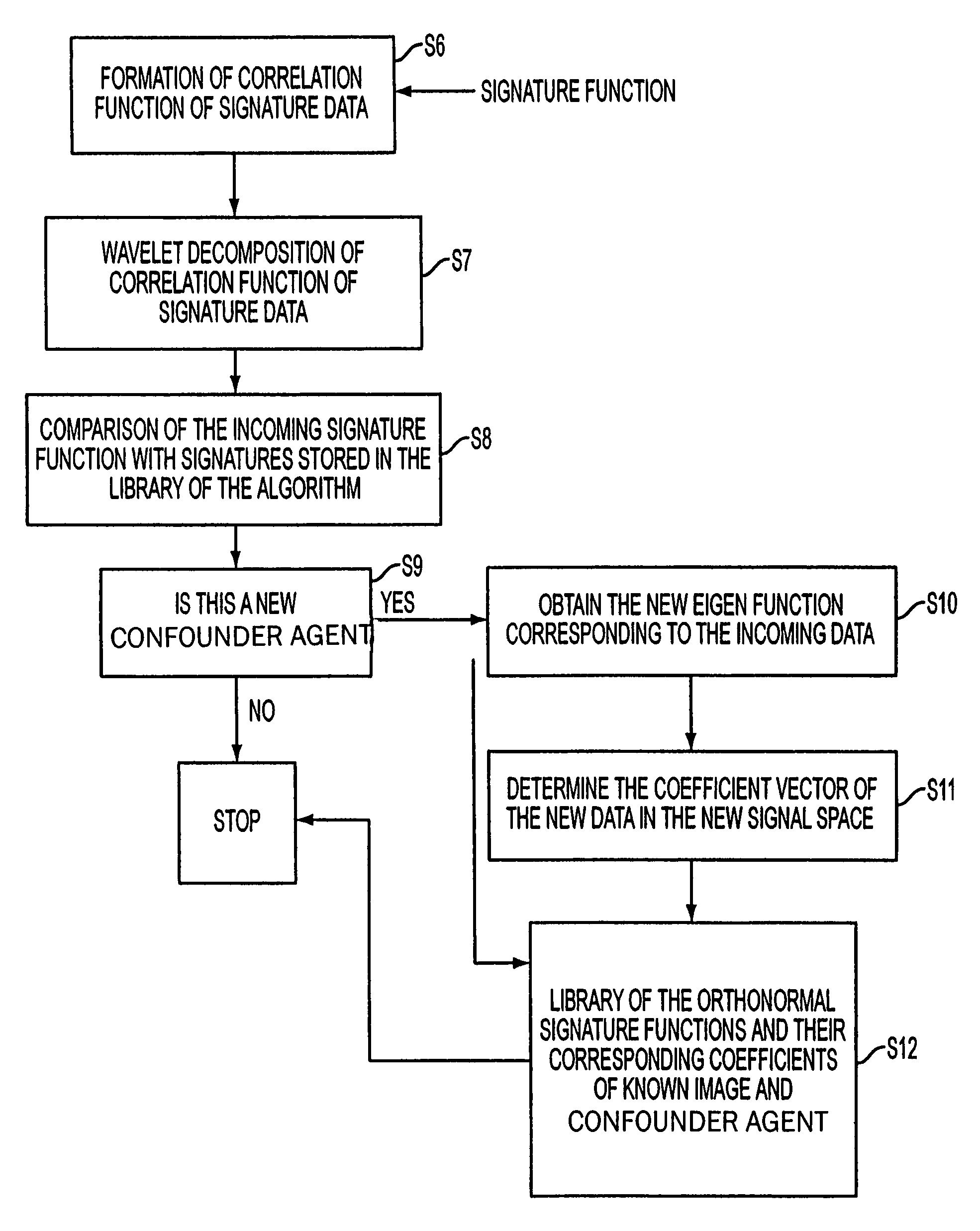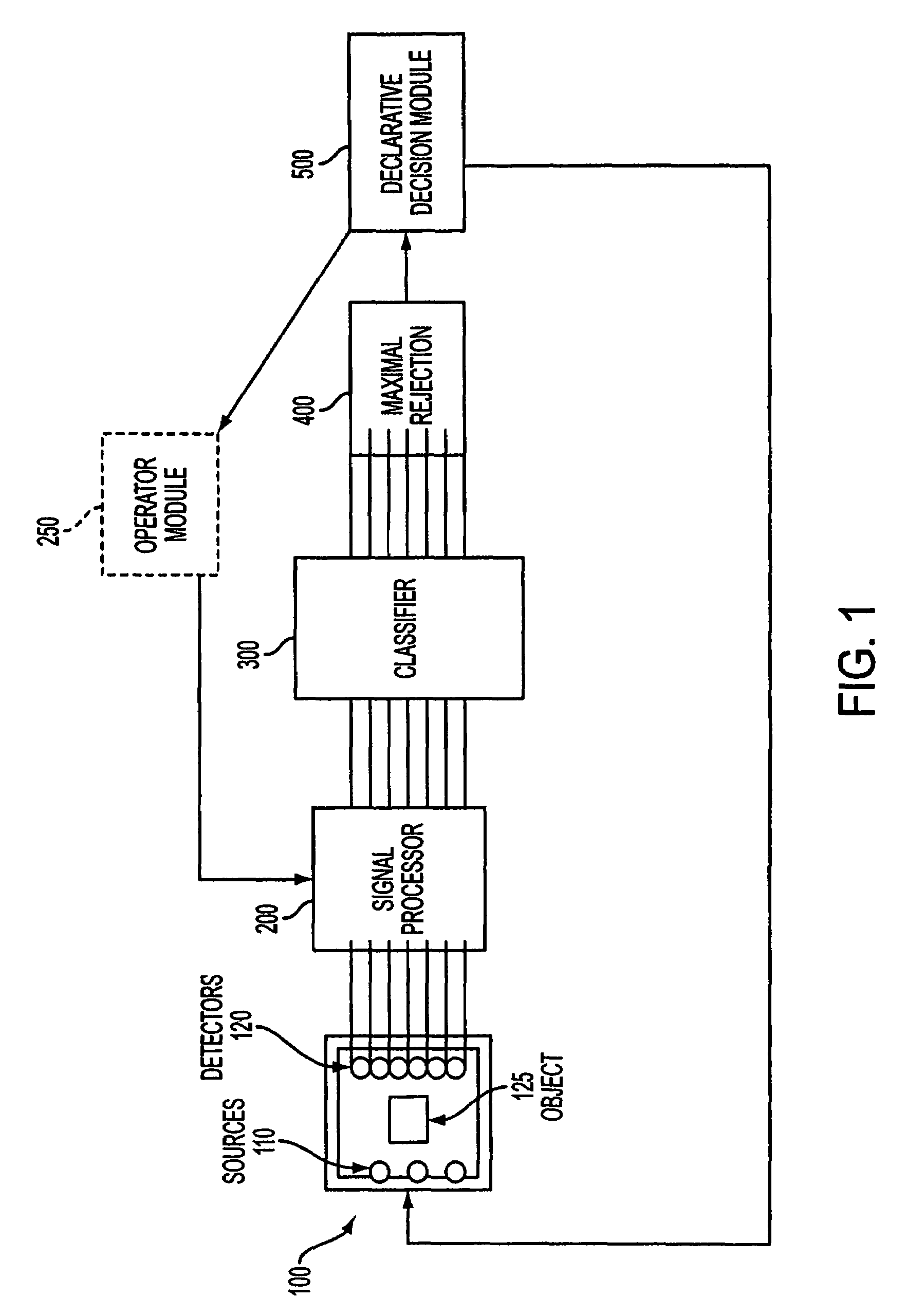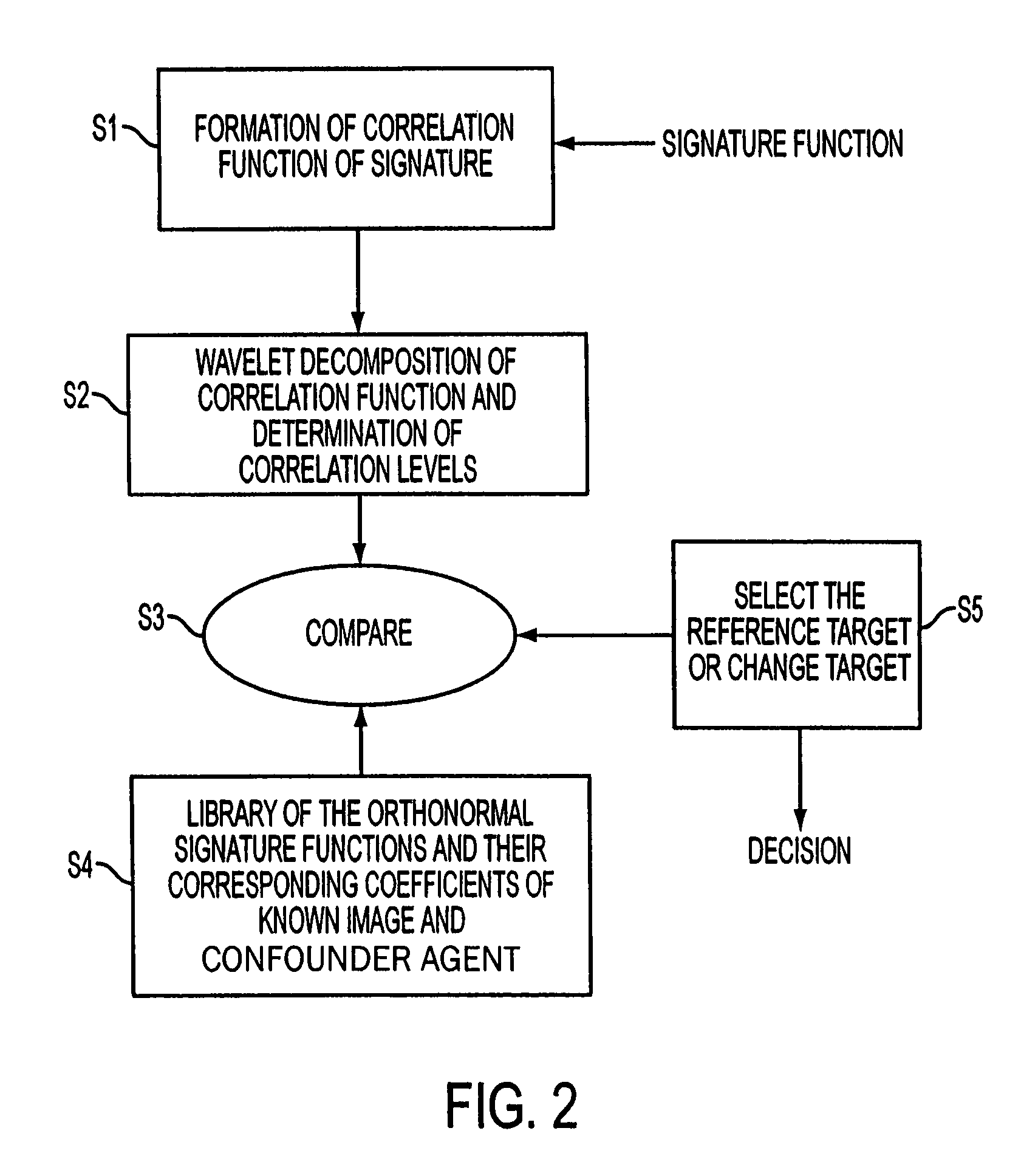Method and apparatus for detecting and classifying explosives and controlled substances
a technology applied in the field of methods and apparatus for detecting and classifying explosives and controlled substances, can solve the problems of complex security of airports from controlled substances such as explosives, drugs, food and their component parts, detection and classification of explosives and certain other controlled substances, and their components, and are not amenable to visual inspection either directly or through the use of x-ray machines
- Summary
- Abstract
- Description
- Claims
- Application Information
AI Technical Summary
Problems solved by technology
Method used
Image
Examples
Embodiment Construction
[0018]Referring to FIG. 1, a preferred system of the present invention is shown, including a source / detector array 100 having a plurality of sources 110 and a plurality of detectors 120. In one preferred embodiment, sources 110 are small pulse neutron generators capable of emitting neutrons at 14.7 MeV with an energy of about 107 neutrons / sec each. In another embodiment of the invention, the energy emitted by sources 110 can be varied depending on the desired level of sensitivity. Neutron generators can optionally emit low intensity neutrons in all directions from sources 110. Sources 110 emit neutrons which can penetrate an object 125 within source / detector array 100 (e.g., luggage).
[0019]When neutrons penetrate object 125, they interact with atomic nuclei within substances contained within and on the outside of object 125 in two distinct ways: collision or absorption. In a collision process, the neutrons collide with an atom's nucleus and bounce off in an elastic or inelastic coll...
PUM
 Login to View More
Login to View More Abstract
Description
Claims
Application Information
 Login to View More
Login to View More - R&D
- Intellectual Property
- Life Sciences
- Materials
- Tech Scout
- Unparalleled Data Quality
- Higher Quality Content
- 60% Fewer Hallucinations
Browse by: Latest US Patents, China's latest patents, Technical Efficacy Thesaurus, Application Domain, Technology Topic, Popular Technical Reports.
© 2025 PatSnap. All rights reserved.Legal|Privacy policy|Modern Slavery Act Transparency Statement|Sitemap|About US| Contact US: help@patsnap.com



